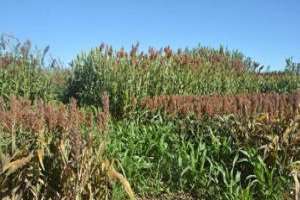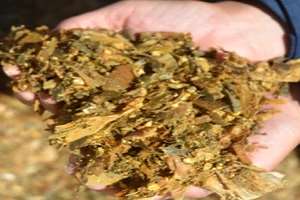Unique data for forage sorghums, including varying feed values and management needs of different hybrids, is coming out of a Texas A&M AgriLife trial being conducted near Bushland.

“On the Texas High Plains, forage sorghums are a very good fit with the livestock industry, especially as dairy and beef cattle forage needs increase at the same time as we become water-limited across the Ogallala Aquifer region,” said Dr. Jourdan Bell, Texas A&M AgriLife Extension Service agronomist in Amarillo.
Forage sorghums are a drought-tolerant, water-efficient alternative to corn, Bell said.
“While corn is often the silage of choice because of its feed value, forage sorghums have a feed value 80 to 90 percent of corn, if managed properly,” she said.

“However, producers are recognizing that we are really going to have to manage our forage sorghums for optimum quality and production, even more so now with the additional concerns about the sugarcane aphid.”
Bell said the data from the forage sorghum trials on a cooperative farmer’s land near Bushland will be unique because she is working with Dr. Ed Bynum, AgriLife Extension entomologist, and Dr. Ted McCollum, AgriLife Extension beef cattle specialist, to evaluate the effect of the sugarcane aphid pressure on forage sorghum production and quality.
“There is such a vast difference in production and quality between sorghum types and hybrids, so it’s really important that we evaluate different forage sorghums specifically for silage to help producers optimize not only their production with regards to tonnage but also the quality at harvest.”
That’s where the value of the forage sorghum trial, currently in its third year, comes in, Bell said. Her work is a continuation of long-term research conducted at Bushland for over 15 years.
The Bushland forage sorghum trial includes over 100 different sorghum hybrids, including forage and grain sorghum types.
Measurements are being taken for yield and quality at harvest, she said. While finished silage is ultimately a result of the product used, it is important the end users recognize that the quality of the silage also can be affected by their management.
Bell, who also has a Texas A&M AgriLife Research appointment, is conducting a secondary study, funded by the Texas Grain Sorghum Board, to evaluate ensiling duration with a select forage sorghum. She will be aided in the research by a West Texas A&M University graduate student.